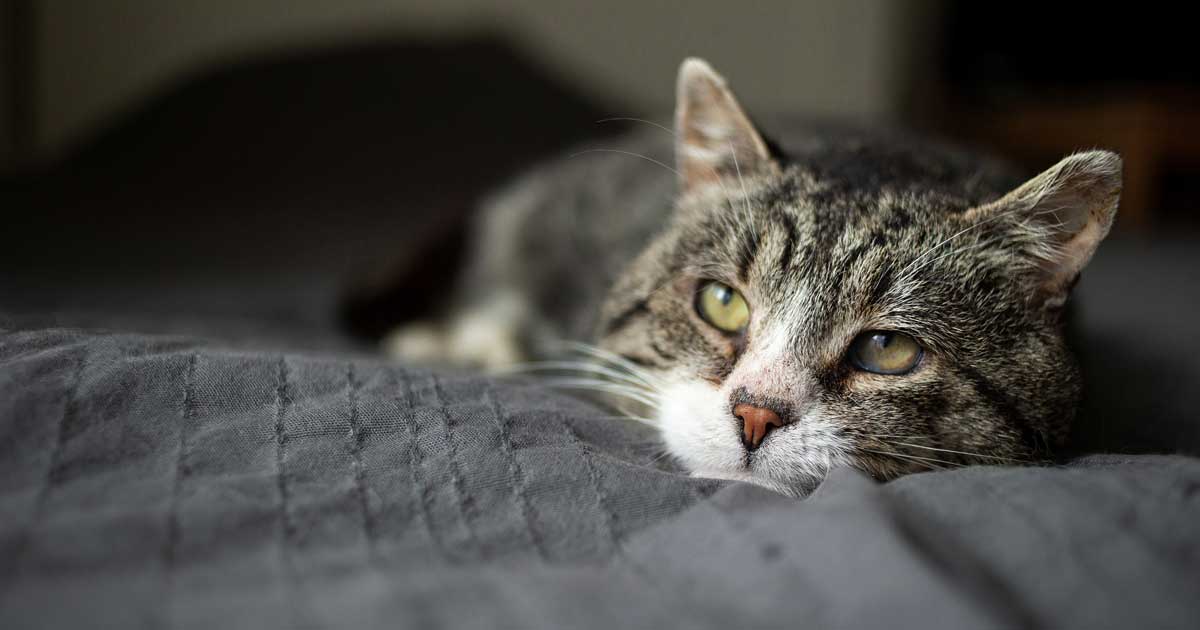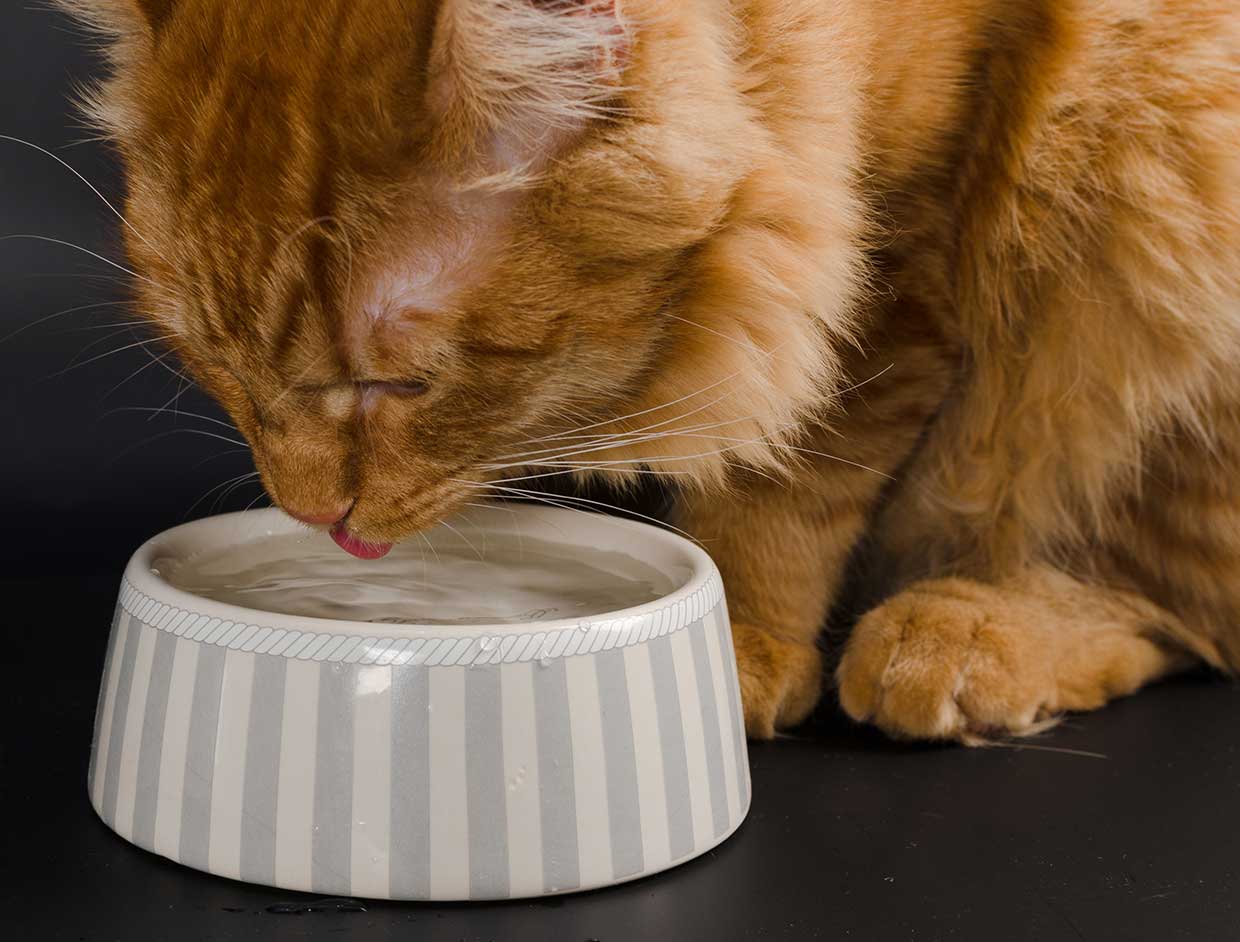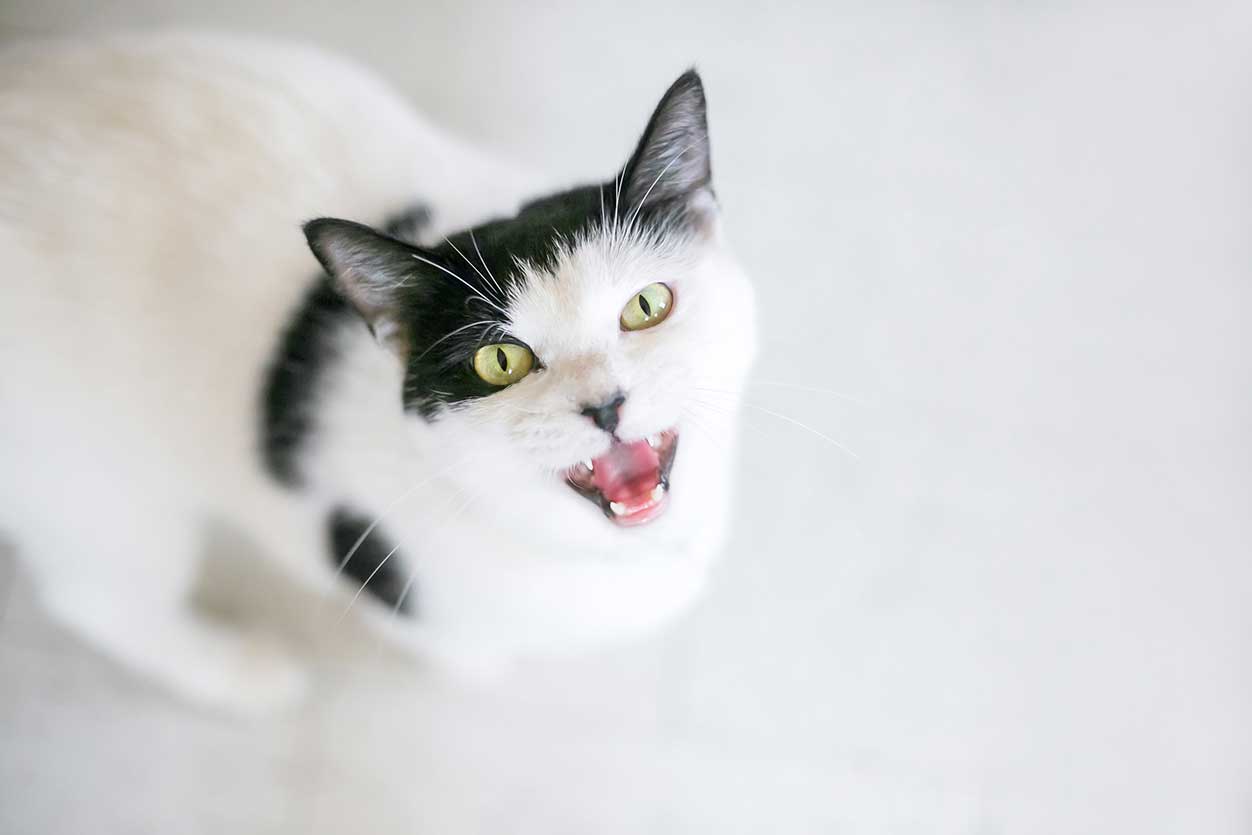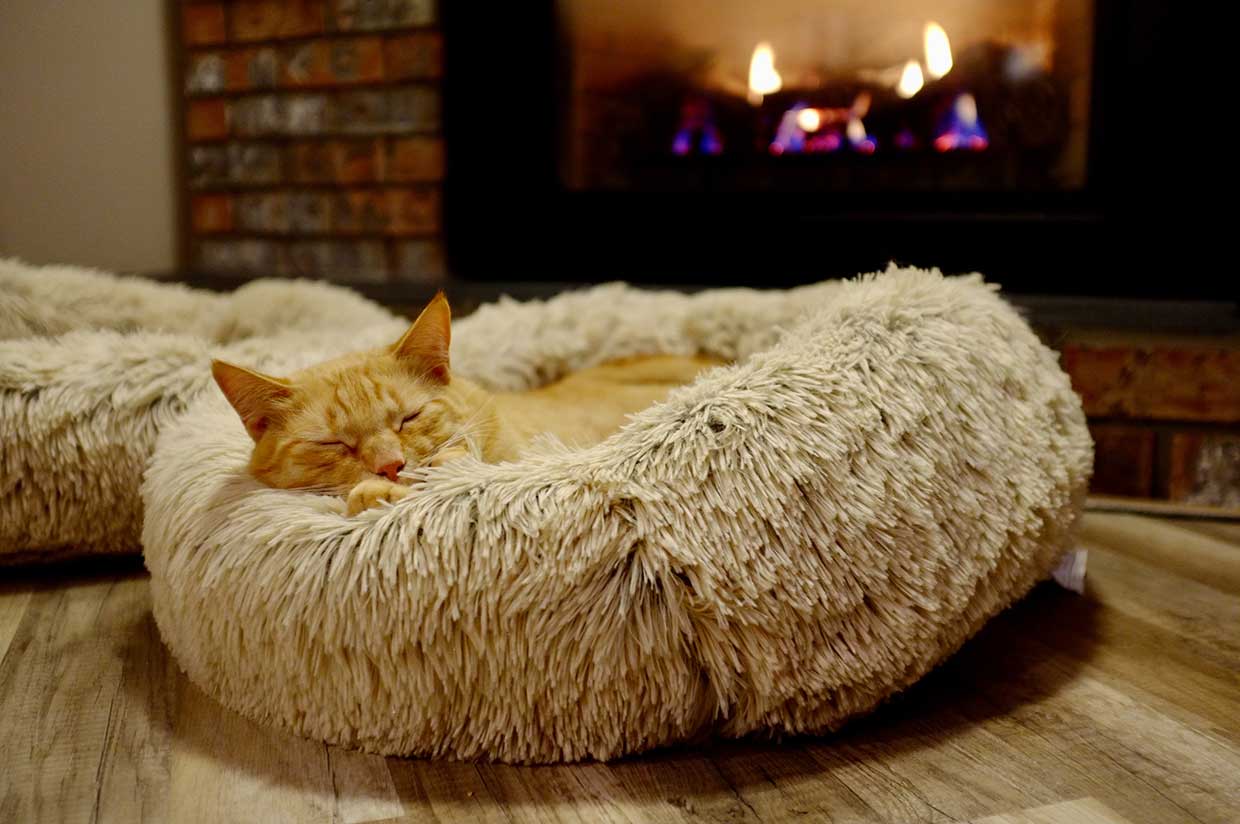12 Oct 2021
Lorena Sordo discusses what to be aware of when presented with older feline patients, including advice for pet owners.

Image: Alexandr / Adobe Stock

Cats are very popular pets and frequent visitors to veterinary practices. According to the most recent PDSA Animal Wellbeing Report 2020, around 11 million pet cats live in the UK1. Moreover, with improvements in veterinary medicine and nutrition, and greater owner awareness and adaptations in the way pets are kept (for example, indoor living), cats are living longer than before2,3, with a median longevity of 14 years2.
Increased lifespans result in more elderly cats attending veterinary practices2,4; therefore, veterinarians must be capable of recognising the early signs of age-related changes and disease in this species, and must provide medical attention that is not only appropriate to the cat’s age, but that also meets each one’s individual needs.
Since nutritional, environmental, behavioural, and medical needs vary with age, specific guidelines have been created to provide the best care for cats during each stage of their life5.
Cats are considered to be kittens from birth to 1 year old, young adults from 1 to 6 years old and mature adults from 7 to 10 years old, with cats older than 10 years of age now considered to be senior5. While young cats and kittens should visit the veterinary clinic at least once a year, older cats should be checked more frequently.
Cats are known to be stoic animals, and considering that signs of illness and age-related changes can be subtle in this species, it is recommended that senior cats visit the clinic every six months and even more frequently if chronic conditions are present5.
Diagnosing illness in elderly cats can be challenging, since veterinarians should be able to differentiate non-pathological signs and changes caused by normal ageing from age-related diseases. In addition, it is not uncommon that elderly cats are presented with concomitant medical conditions that, in some cases, can show similar clinical signs (for example, concurrent hyperthyroidism and diabetes mellitus6) or can be aggravated by normal age-related changes7; for example, house soiling can be worsened by OA if cats have trouble and/or feel pain when getting into their litter tray.
While some of the signs of normal ageing can be easily recognised and addressed, such as overgrown nails, some other changes need to be further investigated. For example, elderly cats are known to lose weight and tend to be underweight8-10. In a recent study that assessed age-related changes in more than 800 cats, owners reported that almost 40% of cats older than 11 years of age had lost weight11.
Even though weight loss is a common feature of ageing, its cause needs to be determined. Age-related physiological decline may result in senior cats having impaired senses of taste and smell12, altered intestinal motility and inefficient absorption of nutrients13-16; hence, it is plausible that weight loss is produced by ageing itself.
However, weight loss and decreased appetite may be exacerbated by the presence of disease (for example, dental disease, diabetes mellitus, hyperthyroidism, kidney disease and so on). Therefore, it is essential not to disregard any apparently normal age-related change and to perform, instead, a thorough investigation to find any potential underlying causes.
Some less perceptible changes may also occur, such as alterations in the function of the kidneys, liver and brain7,12,17. Some of the most common diseases of elderly cats are:
Therefore, a comprehensive medical examination (including haematology, serum biochemistry, urinalysis, total thyroxine and blood pressure) must be performed not only to reach a single diagnosis, but to identify all the concomitant illnesses and to provide appropriate interventions.
Management of these diseases can also be challenging as the treatment for a specific illness may worsen another; for instance, treatment for hyperthyroidism may mask chronic kidney disease18. In addition, since not all the interventions are well tolerated by all, each cat should be treated on an individual basis; hence, adapting any intervention to meet each cat’s requirements is fundamental.
While some of the age-related changes may not be clinically obvious, others can be easily detected not only by veterinarians, but even by cat owners.
For example, in the same questionnaire-based study that assessed the prevalence of disease and age-related changes in more than 800 cats, most owners were able to recognise age-related changes and signs of illness in their cats11. The most common conditions affecting these cats were OA, hyperthyroidism, dental disease and chronic kidney disease.
Of note, the prevalence of these diseases increased significantly in the 20-year period from 1995-201511, suggesting that both veterinarians and cat owners are becoming more aware of these conditions, and that an increasing number of owners are looking for veterinary care to improve the quality of life of their elderly cats.

Senior cats can also display a number of age-related behavioural changes that may progress with age. Some of these include:
While some of these behaviours may result from normal ageing, others may also be associated with underlying disease. For example, house soiling can also be caused by:
Furthermore, elderly cats often display changes in social behaviours, such as demanding more attention from their owners, becoming more affectionate, and vocalising more during the day and at night11.
Similarly, these behaviours could be caused by systemic illness, brain disease, genuine behavioural problems or CDS, which is an important age-related condition that is often misinterpreted as normal ageing.
CDS is a highly prevalent condition, with around 50% of cats older than 15 years of age being affected20,21. CDS produces well-recognised behavioural changes and, eventually, leads to cognitive decline and dementia20,22.
The behavioural changes associated with CDS are summarised under the acronym VISHDAAL23 and include:
Some of these behaviours are more common than others; one study showed that 60% of cats vocalised excessively, with 30% of them doing so mainly at night; 50% of them demanded more attention; and 30% of them house-soiled11. However, it is still unknown whether an order of appearance of these behaviours exists, and it is likely that individual variations occur.
It is important to recognise that some of these behaviours may be caused by other conditions rather than by CDS. For instance, increased vocalisation could result from pain – especially when caused by OA, which, as mentioned previously, is a highly prevalent and often underdiagnosed condition in elderly cats11,24,25.
A recent owner-reported based study focused on understanding the cause of increased vocalisation in elderly cats with CDS26; this study showed that most of the cats primarily vocalised due to disorientation (40%) or attention-seeking (40%)26. Even though only 3% of owners reported their cats vocalised because of pain26, most of the cats appeared to vocalise for more than one reason, so that pain may have been under-recognised.
A complete examination of senior cats should include a socio-environmental assessment to determine whether all the cat’s requirements are appropriately met.
Senior cats are susceptible to stress and cannot cope with changes; this can potentially exacerbate some of the aforementioned behavioural changes. For this reason, it is fundamental to keep changes in their environment to a minimum; however, if needed, changes should be made slowly. Some of the environmental adjustments for elderly cats include:

Besides performing an exhaustive medical examination, plus behavioural and socio-environmental assessments, veterinarians should be proactive and ask about any specific changes as often some owners may not mention them during consultation. This could result from cats hiding their illness; hence, owners have trouble perceiving any changes.
However, it is also possible that owners might consider these changes as normal ageing, and they disregard them by the misconception that nothing can be done7. In addition, some owners may be embarrassed about some changes and decide not to mention them during the consultation, as often occurs with cats that house soil7.
For this reason, it is crucial that veterinarians educate and raise awareness, explaining to the owners what changes to look for (for example, changes in food and water intake, changes in bodyweight, mobility alterations, production of urine and faeces, and behavioural changes) to identify early signs of disease.
Owners can also be reluctant to bring the cat to the clinic as the experience may be too stressful for both the owner and the cat. However, owners can help to minimise the stress associated with visiting the clinic by exposing the cats from a young age to the carriers, using pheromones, adding favourite blankets to the carrier and so on.
Furthermore, the implementation of cat-friendly clinics (for example, having specific waiting and examination areas for cats) is equally important to minimise stress during their visits.

It is clear that a fine line exists between what can be considered normal and abnormal age‑related changes, highlighting the importance of efficiently recognising and differentiating between them. For this reason, veterinarians must perform a thorough medical examination.
In addition, they should ask the owners about their cat’s behaviour and environment to obtain an adequate diagnosis, and so provide early and effective interventions that may improve the welfare and quality of life of senior cats that visit the clinic.